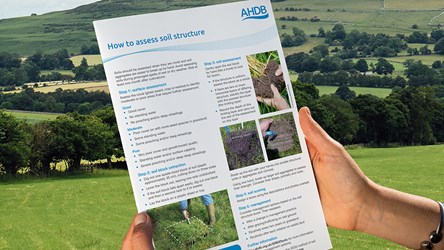- Home
- Knowledge library
- How to assess soil structure
How to assess soil structure
Perform a visual evaluation of soil structure (VESS) with this guidance (view online or order a laminated copy).
Visual evaluation of soil structure (VESS) is a straightforward and quick way to test soil structure in a few simple steps. The soil quality score produced can help highlight where soil structure needs to be improved. Look through our helpful resources to learn more.
Order a publication
Order a copy of the 'How to assess soil structure' factsheet, which is laminated for use in the field.
Order a copy from our online catalogue
Why is good soil structure important?
Soil structure is determined by how soil particles (sand, silt, clay and organic matter) and the spaces between form structural units. Crop and grass growth relies on good soil aeration, drainage and the efficient supply of nutrients and water.
A visual evaluation is a straightforward assessment that will show if soil structure needs to be improved. Observations of the soil surface, the soil profile and rooting patterns are the best way to get information about structure.
Soil structural assessments
Soil structural assessments can be used to help identify important constraints, such as compaction. Ideally, assess each distinct layer separately and target the worst-performing, ‘limiting’ layer first.
The assessment is done in the field, and you will need a spade. For comparison, dig holes in ‘good’ and ‘bad’ areas of a field.
- Soils in good condition are generally well structured
- Soils in moderate condition have larger and more angular aggregates, and restricted pore space
- Soils in poor condition are severely degraded with very large angular or plated aggregates and/or a very dense compacted layer
Timing of soil structure assessment
Soils should be assessed when they are moist and soil aggregates are easier to break up by hand. If the soil is too wet, soil units may stick together and the spade or fork can smear the soil. If the soil is too dry, it can be difficult to dig. Soil that has dried hard may be misinterpreted as being compacted.
It is possible to assess the soil at any time of year, but doing so from late autumn (when drains are running on heavier land) to early spring (on a ‘drying front’) is usually better than midsummer. Avoid assessing soils during prolonged spells of wet or dry weather.
Examine each layer of soil
When digging soils of similar texture and moisture content, variation in resistance can help pinpoint poor structure. The position, quantity and vigour of roots in the soil can also highlight issues. Concentrated areas of roots indicate hard-to-penetrate layers (e.g. soil pans) or blocks of soil. Soil pans are more likely in gateways and headlands. The dryness of zones in the soil may also shed light on root activity.
A hardened layer can form in the subsoil where quantities of calcium carbonate, silica or iron, manganese and aluminium compounds cause particles to bind together tightly in a discrete layer. Such layers are often associated with a fluctuating water table.
Identify areas of damaged/poor soil structure (e.g. areas prone to surface capping, slumping, waterlogging, compaction or drought).
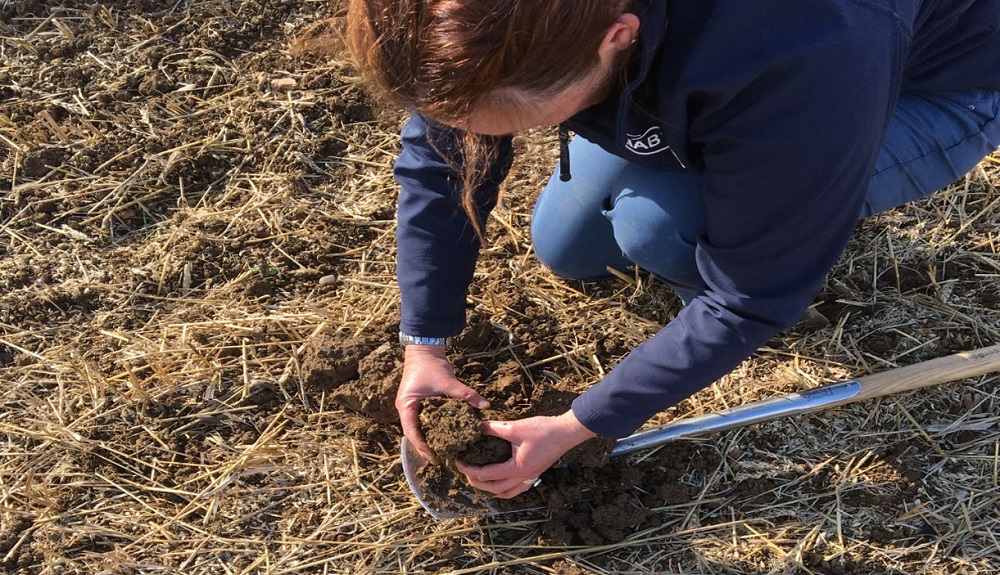 AHDB
AHDB
Visual evaluation of soil structure (VESS)
Guidance is based on the SRUC VESS method
The guidance also builds on information developed for the grassland sector.
Healthy grassland soils information
Step one: Soil surface assessment
Look at the quality of the grass sward or crop to identify potentially damaged areas that require further assessment. Where the sward is moderate or poor, this may indicate that further investigation of the soil quality is required.
Good
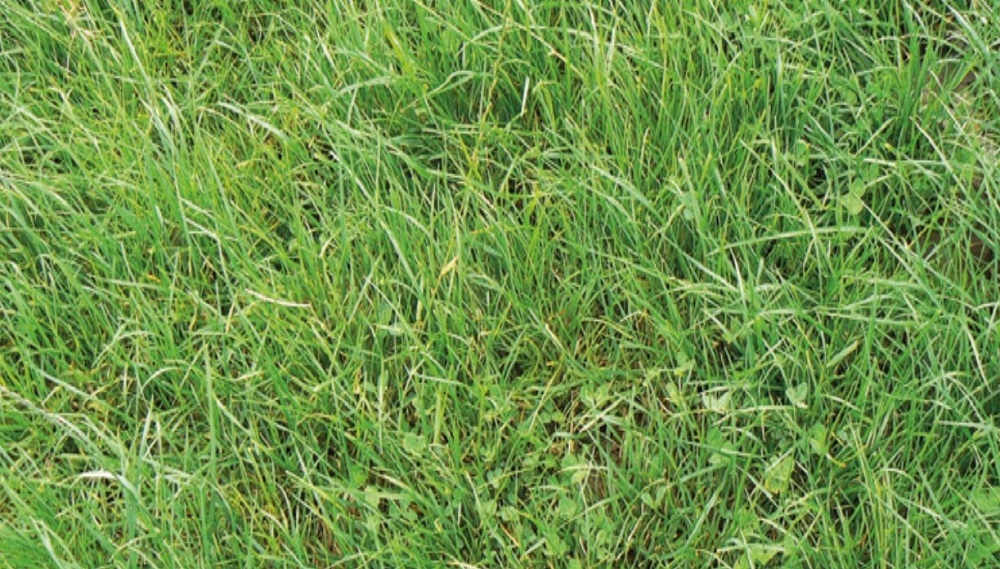 SRUC
SRUC
- Good cover
- No standing water
- No poaching and/or deep wheelings
Moderate
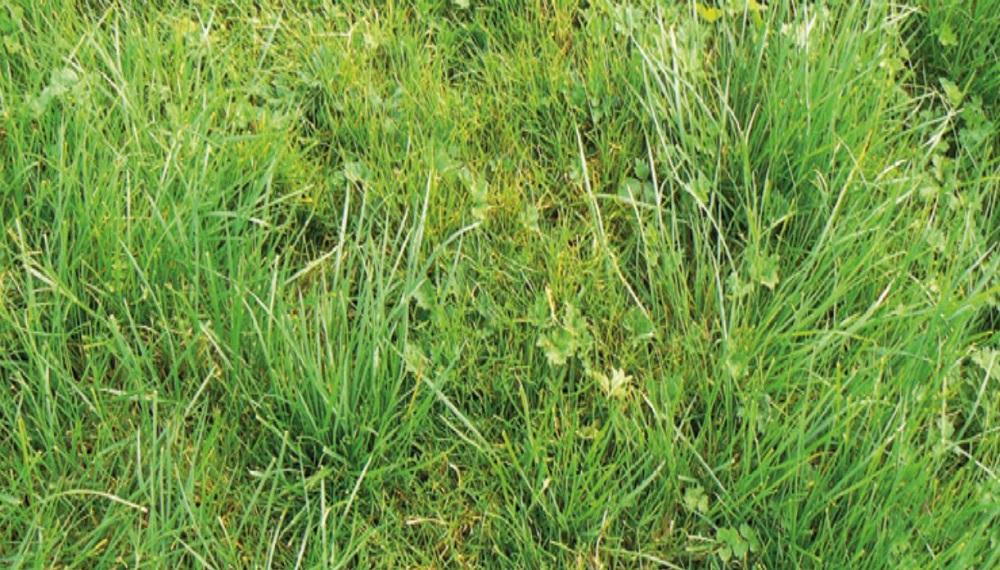 SRUC
SRUC
- Poor cover (or with more weed species in grassland)
- Some standing water
- Some poaching and/or deep wheelings
Poor
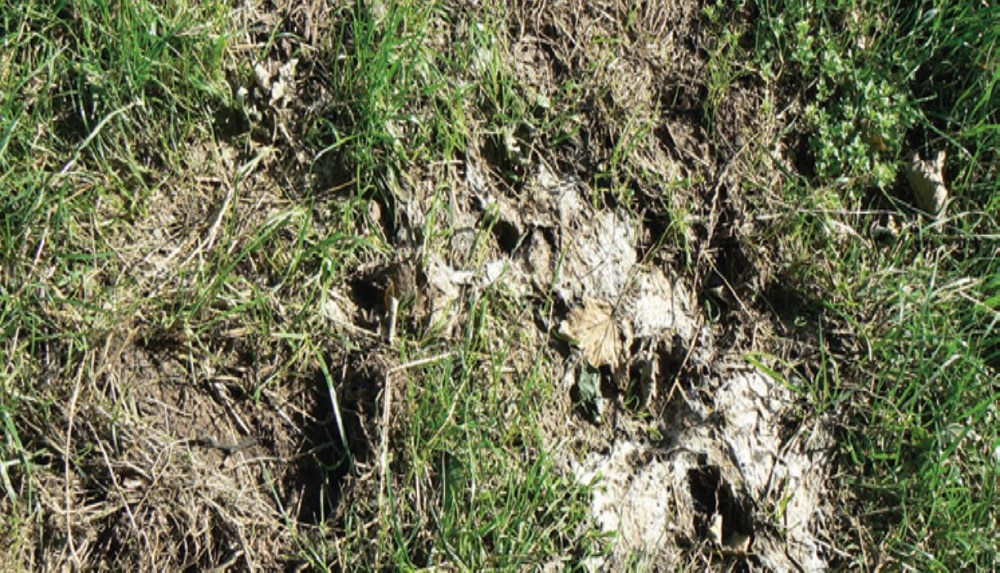 SRUC
SRUC
- Very poor cover and growth/sward quality
- Standing water and/or surface capping
- Severe poaching and/or deep wheelings
Step two: Soil block extraction
- Cut out three sides of a square block (about 30 cm deep) – leave an undisturbed side
- Lever out and lay the block on a plastic sheet or tray – undisturbed side up
- If the soil block falls apart easily, dig out a second block (and place it next to the first)
Top tip: Dig in ‘good’ (e.g. hedge bottom) and ‘bad’ (e.g. a gateway or tramline) areas to get familiar with soil structure.
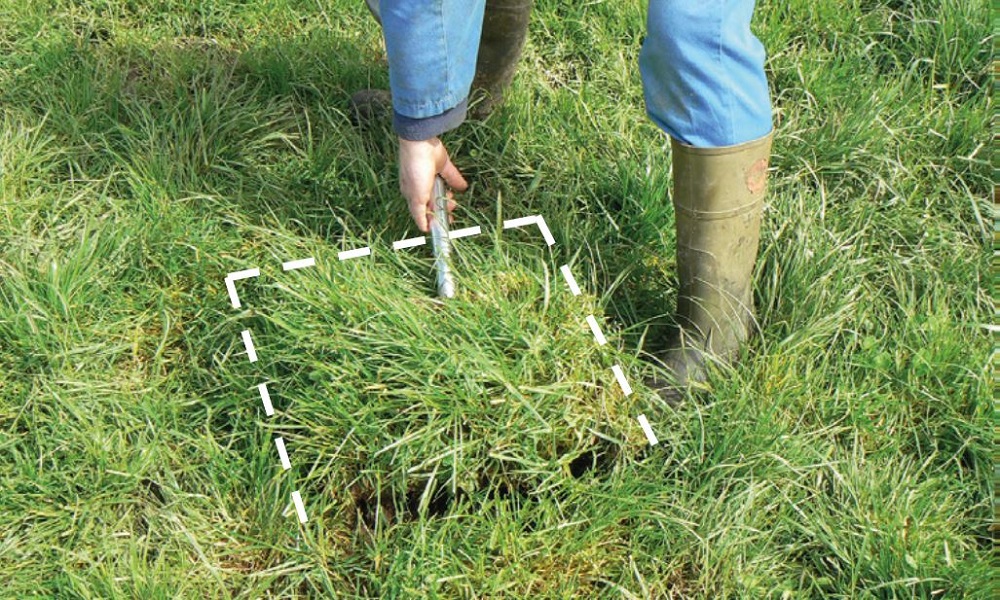 SRUC
SRUC
Step three: Soil assessment
Gently open the soil block by hand (like a book) to look for layers.
- If the structure is uniform, assess the block as a whole
- If there are two or more horizontal layers of differing structure, identify the layer with the poorest structure (the limiting layer)
-
Record the depth of this limiting layer and carry out the rest of the assessment on this layer
 near the top.JPG) SRUC
SRUC
 at the bottom.JPG) SRUC
SRUC
Break up the soil with your hands into smaller structural units or aggregates (soil clumps).
Using one hand, break up larger soil aggregates to assess their strength.
Consider their shape, porosity and roots.
Step four: Soil scoring
Assign a score using the descriptions and photos below:
- 1–2 is Good
- 3 is Moderate
- 4–5 is Poor
Score 1 (good) – crumbly
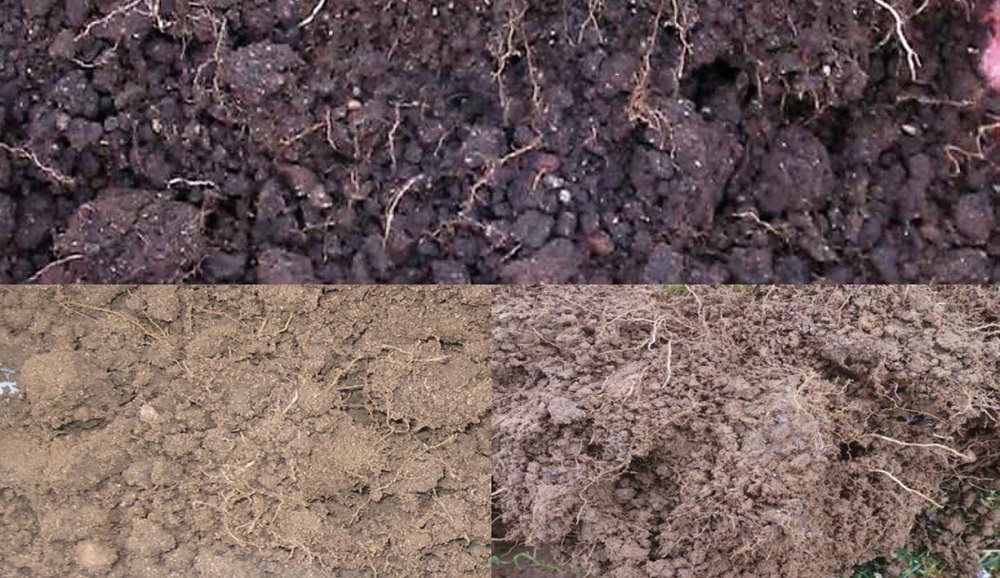 SRUC
SRUC
Structure quality
- Crumbly (aggregates readily crumble with fingers)
Description
- Good soil structure
- Highly porous
- Small (<6 mm), rounded aggregates
- Numerous, well-distributed roots
- Sweet, earthy smell
Management
No management changes needed, continue routine monitoring.
Score 2 (good) – intact
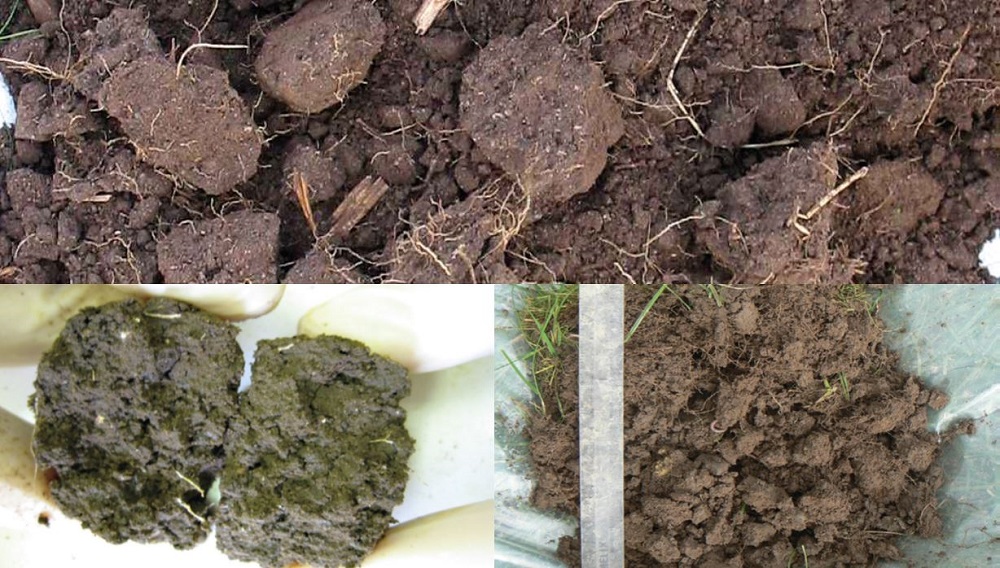 SRUC
SRUC
Structure quality
- Intact (aggregates easily break apart)
Description
- Good soil structure
- Porous
- Larger rounded aggregates
- 10 mm in grassland systems, 2 mm to 7 cm in arable systems
- Good root distribution
- Earthy smell
Management
No management changes needed. Reassess annually on grassland. Continue rotational monitoring on arable land.
Score 3 (moderate) – firm
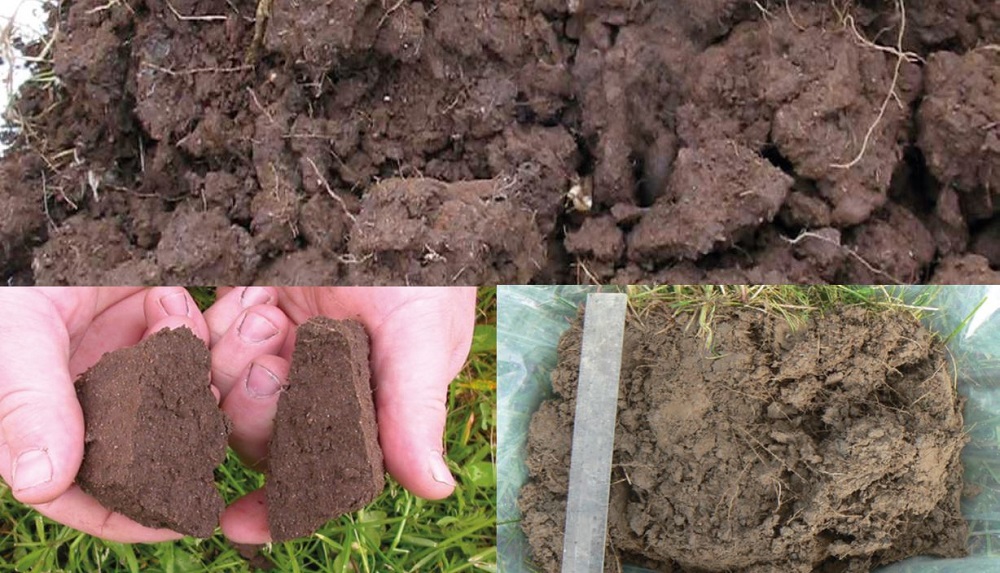 SRUC
SRUC
Structure quality
- Firm (most aggregates break down)
Description
- Adequate soil structure
- Less visible pores
- Rounded aggregates, with some angular
- 10 mm in grassland systems, 2 mm to 10 cm in arable systems
- Fewer roots distributed within soil aggregates
- No strong smell
Management
Minimise traffic on wet ground. Infrastructure changes in grassland can help, e.g. back-fencing, multiple field entrances or tracks. Consider cultivation depth on arable land in autumn.
Score 4 (poor) – compact
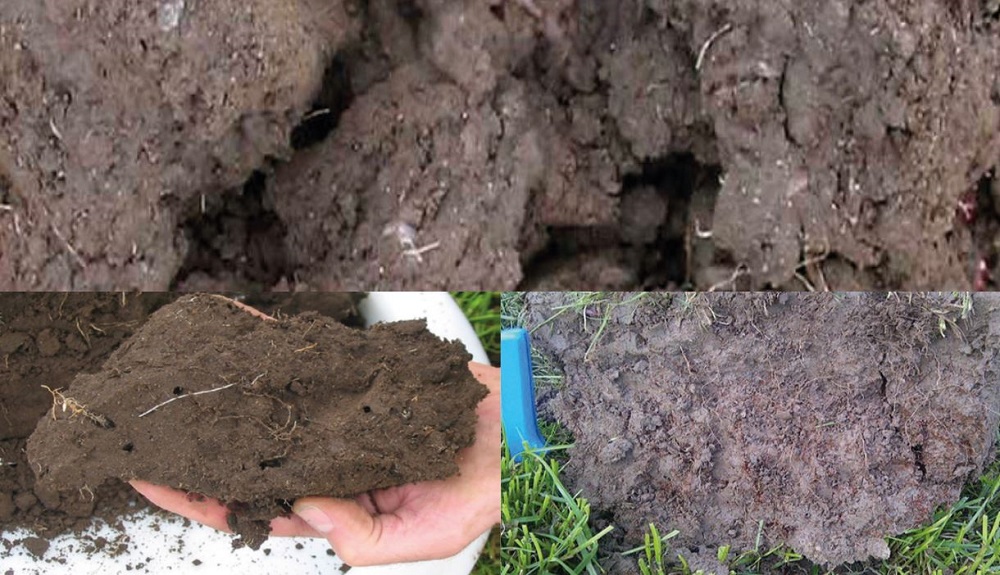 SRUC
SRUC
Structure quality
- Compact (effort needed to break down aggregates)
Description
- Poor soil structure
- Very few pores
- Mostly large angular aggregates
- >5 cm in grassland systems, mostly >10 cm in arable systems
- Reduced rooting clustered in large pores, worm channels and cracks between aggregates
- Some red/orange mottling may be present (sign of poor drainage)
- May have sulphur smell (i.e. bad eggs)
Management
Minimise traffic on wet ground. Check subsoil layers for compaction. Consider targeted cultivations under the right soil conditions.
On grassland, consider using a sward slitter or aerator (<10 cm depth) and a sward lifter/top-soiler (10 to 30 cm depth). If the sward is poor, consider ploughing or reseeding.
On arable land, consider improved drainage and diversifying crop rotations, especially the inclusion of no-till periods (e.g. ley-arable rotations).
Score 5 (poor) – very compact
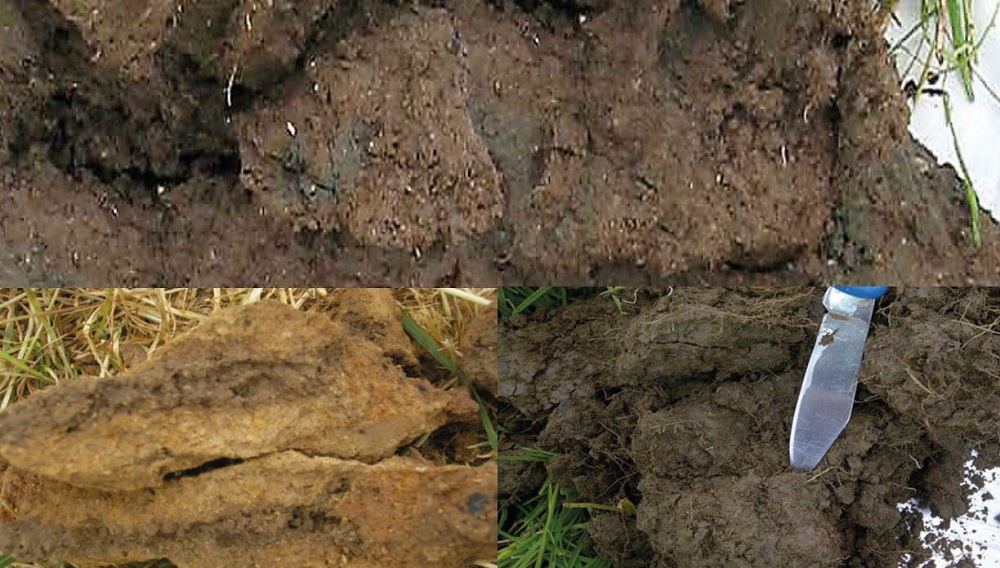 SRUC
SRUC
Structure quality
- Very compact (aggregates are compact, difficult to pull apart and platy)
Description
- Poor soil structure
- Very few pores
- Very large angular or platy aggregates (>10 cm)
- Few roots, if any, restricted to the surface, down large pores, following earthworm channels or cracks
- May have grey colour with red/orange mottling (sign of poor drainage)
- May have strong sulphur smell (i.e. bad eggs)
Management
Minimise traffic on wet ground. Check subsoil layers for compaction. Consider targeted cultivations under the right soil conditions.
On grassland, consider using a sward slitter or aerator (<10 cm depth) and a sward lifter/top-soiler (10 to 30 cm depth). If the sward is poor, consider ploughing or reseeding.
On arable land, consider improved drainage and diversifying crop rotations, especially the inclusion of no-till periods (e.g. ley-arable rotations).
Step five: Reassessment
Consider management options based on the soil structure score. Then reassess:
- After a change in management practice
- After grazing/trafficking on wet ground
- Routinely every two years on grassland
- Routinely after each rotation on arable land
Assessing the subsoil
SRUC has developed the SubVESS method for visually assessing subsoil.
The method uses similar indicators of structure and porosity to the VESS tool but is adapted for the specific nature and properties of subsoils, which tend to have lower organic matter content, larger structures, fewer roots, and lower porosity compared with topsoils.
The SubVESS method can be used in combination with a penetrometer to give you a good indication of whether your subsoil is compacted.
Soil strength measured by penetrometer
A penetrometer can be used to measure soil strength, providing a measure of the force used to push into the soil. To get the best out of this device you need to know the typical readings for the soils in each field. Once you have built up a good knowledge base, the measurements made following different management interventions can be assessed with confidence.
Sward MOT
Watch this video by grassland consultant Chris Duller on how to conduct a sward MOT. This assessment of soil health should be done early in the year and helps identify action that may need to be taken in the spring or summer.
Understanding grassland soil structure
Chris Duller takes a look at soil structure and talks about heavy soil, light soil and recognising signs of compaction on the grass surface.
Use the soil health scorecard
The soil health scorecard provides a framework to monitor soil health on a rotational basis.
The Excel-based tool uses soil analysis results for core soil health indicators and compares them to typical ranges for UK soil types and climate regions (benchmarks).
A completed scorecard automatically produces a 'traffic-light' snapshot of soil health to guide your management decisions.


